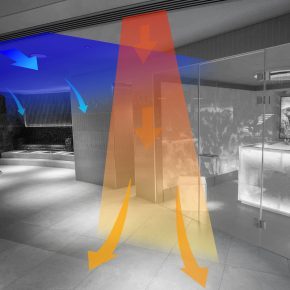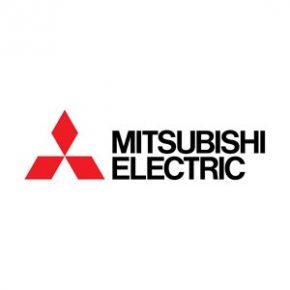
How rooflights can offer energy savings and carbon reductions
Primarily used to flood natural light into buildings and structures, the rooflight’s role has evolved significant in recent decades to deliver a whole range of requirements, including improving thermal performance and reducing demand on lighting, heating, cooling and ventilation systems.
Until 2006, it was thought that the introduction of rooflights into an existing building would compromise its thermal performance – as glass would not have provided the same level of insulation as opaque areas.
However, research carried out by Oxford Brookes University, funded by the National Association of Rooflight Manufacturers (NARM), changed these misconceptions about the role of rooflights in the overall energy efficiency of buildings.
The study demonstrated that the optimum level of roof lighting (in appropriate buildings) was 15-20% of the floor area. NARM has since gone on to publish a more recent report based on independent research by Elmhurst Energy in 2014.
Reducing carbon through rooflights
The report aims to show that energy savings and carbon reductions can be made on existing UK industrial and commercial buildings by increasing the amount of natural light and improving and adding automatic control to lighting systems.
The study assesses three different buildings, designed for educational, industrial and retail use, to explore the impact a number of improvements measures would have.
Elmhurst Energy and NARM created a range of scenarios to apply to the buildings, demonstrating how increasing the quality of daylight within buildings would affect carbon emissions, costs and energy use.
Elmhurst Energy study
The retail building, a self-contained Homebase store with a total floor area of 3,930 metres squared, benefited from a 29% reduction in carbon emissions due to improvements to the rooflights, while only 11% savings could be made by enhancing the electric lights and lighting control systems.
In the 994 metre squared industrial building, the same improvements would deliver a 23% and 14% reduction respectively.
The primary school however scored far lower than the other buildings, as only 51.4% of the floor area was in rooflit zones, therefore improvements studied only affect around half of the building.
The same improvements to the roof lights and control systems saw only an 8.9% reduction in carbon emissions, whilst Improvements to the electric lights and lighting controls similarly underperformed, offering savings of 3.7%.
Significant savings
All three building types showed significant savings to be made in both running costs and carbon emissions, achieved through using better insulated rooflights – such as the leak-free EcoGard from Lonsdale Metal – and better availability of natural light through the rooflights.
With ever more stringent Building Regulations and end users demanding better performing buildings, roof glazing systems are becoming ever more popular within the construction industry.
Combined with modern lighting controls, the introduction of natural daylight through a high performance rooflight system can allow artificial lighting to be reduced and improve energy efficiency throughout a building, whilst also offering an attractive and welcoming environment for its occupants.
For further information, please contact NARM using the contact details on our website, where you will be directed to the appropriate person.
Click here to visit The Rooflight Association's website
Visit Supplier's page
Latest news

1st April 2025
Gilberts Takes Thermal Comfort to New Heights
Gilberts Blackpool is continuing to build on its reputation as a pioneer with the unveiling of ThermaAstute™ – the most extensive range of thermally sensitive diffusers in the market.
Posted in Air Conditioning, Articles, Building Industry News, Building Products & Structures, Building Services, Facility Management & Building Services, Heating, Ventilation and Air Conditioning - HVAC, Innovations & New Products, Restoration & Refurbishment, Retrofit & Renovation, Sustainability & Energy Efficiency
1st April 2025
University of Bath Student Helps Vent-Axia Win Two Environmental Industry Awards
Leading ventilation manufacturer, Vent-Axia, is delighted that the valuable work University of Bath student Roben Els undertook during an industry placement at the company contributed to it winning two environmental industry awards.
Posted in Air Conditioning, Articles, Awards, Building Industry Events, Building Industry News, Building Products & Structures, Building Services, Heating, Ventilation and Air Conditioning - HVAC, Recruitment, Retrofit & Renovation, Sustainability & Energy Efficiency, Training
1st April 2025
Ahmarra: Fire Doors Designed for Hospitals & Healthcare Environments
Ahmarra is a leading UK specialist in fire doors for healthcare environments, having manufactured and installed thousands of bespoke doorsets for NHS hospitals across London and the South East.
Posted in Access Control & Door Entry Systems, Accessibility, Acoustics, Noise & Vibration Control, Architectural Ironmongery, Articles, Building Industry News, Building Products & Structures, Building Services, Building Systems, Doors, Facility Management & Building Services, Health & Safety, Interior Design & Construction, Interiors, Restoration & Refurbishment, Retrofit & Renovation, Security and Fire Protection, Timber Buildings and Timber Products, Wooden products
1st April 2025
Mitsubishi Electric: New intuitive, IoT-ready centralised controller offers instant access to 400 units
Mitsubishi Electric has launched a new user-friendly, touchscreen controller to offer full remote controllability, monitoring and reporting for up to 400 air conditioning units.
Posted in Air Conditioning, Articles, Building Industry News, Building Products & Structures, Building Services, Facility Management & Building Services, Heating Systems, Controls and Management, Heating, Ventilation and Air Conditioning - HVAC, Information Technology, Innovations & New Products, Pipes & Fittings, Plumbing, Posts, Research & Materials Testing, Retrofit & Renovation, Sustainability & Energy Efficiency
 Sign up:
Sign up: